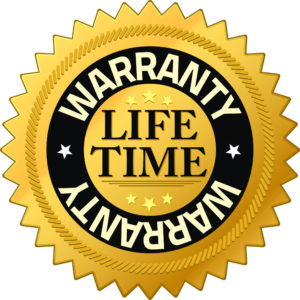Dr. Bones & Nurse Amy wrote an excellent post on blood pressure and we publish part of it here for your review, with their permission of course!
One of the most common chronic medical conditions that we will see, in good times or bad, is high blood pressure. Looking back recently at all the articles on [my] blog, I surprised myself when I realized that I hadn’t written about this condition, also known as hypertension, even though I have a touch of it myself. So, here is a primer on high blood pressure, its diagnosis, and treatment:
 The blood pressure is the measure of the blood flow pushing against the walls of the arteries in your body. Without this flow of blood, oxygen would never get to all the organs of the body. If this pressure, however, is elevated over time, it can cause long-term damage. Many millions of adults in the U.S. have this condition, which is often asymptomatic (no signs or symptoms). Because of this, it has been referred to as a “silent killer”. Blood pressure tends to rise with increasing age and weight.
The blood pressure is the measure of the blood flow pushing against the walls of the arteries in your body. Without this flow of blood, oxygen would never get to all the organs of the body. If this pressure, however, is elevated over time, it can cause long-term damage. Many millions of adults in the U.S. have this condition, which is often asymptomatic (no signs or symptoms). Because of this, it has been referred to as a “silent killer”. Blood pressure tends to rise with increasing age and weight.
The group medic should have, as part of his equipment, a stethoscope for listening and a pressure monitor called a “sphygmomanometer” (blood pressure cuff). This is relatively inexpensive and will allow you to keep an eye on the blood pressures of the members of the community. To use it, place the cuff around the upper arm and fill it up with air, using the attached bulb. Place your stethoscope over an area with a pulse (commonly the inside of the crook of the arm – see figure above) and listen while looking on the gauge on the cuff. Some new compact blood pressure units are shaped like wristbands and no longer require a stethoscope.
When you take a blood pressure, you are listening for the pulse to register on your stethoscope as a rhythmic thumping sound. A blood pressure is measured as systolic and diastolic pressures. “Systolic” refers to blood pressure when the heart beats and “Diastolic” refers to blood pressure when the heart is at rest. Therefore, blood pressure is written down as systolic over diastolic: for example: (systolic pressure) 120 over 80 (diastolic pressure).
Wherever the gauge is when you first hear the pulse is the “systolic” pressure. As the air deflates from the sphygmomanometer, the pulse will fade away. When it first appears to fade is the “diastolic” pressure. You should be concerned with numbers that are above 140/90 in the supine or sitting position. As blood pressures tend to vary at different times of the day and under different circumstances, you would be looking for at least 3 elevated pressures in a row before making the diagnosis of high blood pressure (hypertension). Readings above 160/100 are associated with higher frequency of complications. Persistent hypertension can lead to stroke, heart attack, heart failure and chronic kidney failure. Commonly seen symptoms include headaches, blurred vision, or nausea and vomiting.
Sometimes, elevated pressures can cause a blood vessel in the brain to have an “accident”. Strokes (also known as “cerebrovascular accidents” or CVAs) are bleeding episodes or clots in the brain that occur as a high pressure event, and can cause paralysis. Suspect this condition if your patient has suddenly found themselves unable to control the extremities on one side of their body, or is unable to speak and cannot move one side of their face. They will usually complain of a severe headache as well.
The first step to controlling elevated blood pressures is to return to a normal weight for your height and age. Most people who are obese find that their pressures decrease (often back to normal) when they lose weight. Physical exercise and dietary control are the best way to get there. Dietary restriction of Sodium (salt) is an important factor when it comes to decreasing pressures. Alcohol, Nicotine, and perhaps Caffeine are also known to raise blood pressures, so abstention from these substances is an additional strategy.
…continue reading HERE.







I’m sure in a grid down situation, many of us are going to get exercise we’re not accustomed to. Plus, our diet may change of necessity, if we haven’t already made certain preparations.
Blood pressure medication could be a problem for those of us who take tiny pills that can’t be broken up. When the medicine is gone, we’ll be forced to take our chances and hope for the best.
It’s fairly easy to get normal blood pressure. And you will feel a lot better than taking BP meds which has many side effects, including impotence, chronic coughing etc.
The key is to reduce chronic inflammation in the circulatory system. Damage is primarily caused by sugar intake. American diets are heavy with sugar, that is why Chronic BP problems arise as people age. Reverse the damage and live a healthy vital life!
http://www.laleva.org/eng/2012/03/world_renown_heart_surgeon_speaks_out_on_what_really_causes_heart_disease.html
Just:
1. Return to normal weight
2. Eat saturated fats from grass fed beef and organic fish/chicken, Extra Virgin Olive Oil and coconut oil. Yes butter is good. No unsaturated fats please.
3. No sugar. None. No wheat products either.
4. No processed foods. If it comes out of a box or packaging don’t eat it.
5. Exercise every day.
6. Drink plenty of fresh water
7. Yes eat salt, grey sea salt only though
8. No smoking, limited alcohol.
9. Limited caffeine intake
10. Plenty of fresh organic fruits and vegetables.
That’s it!